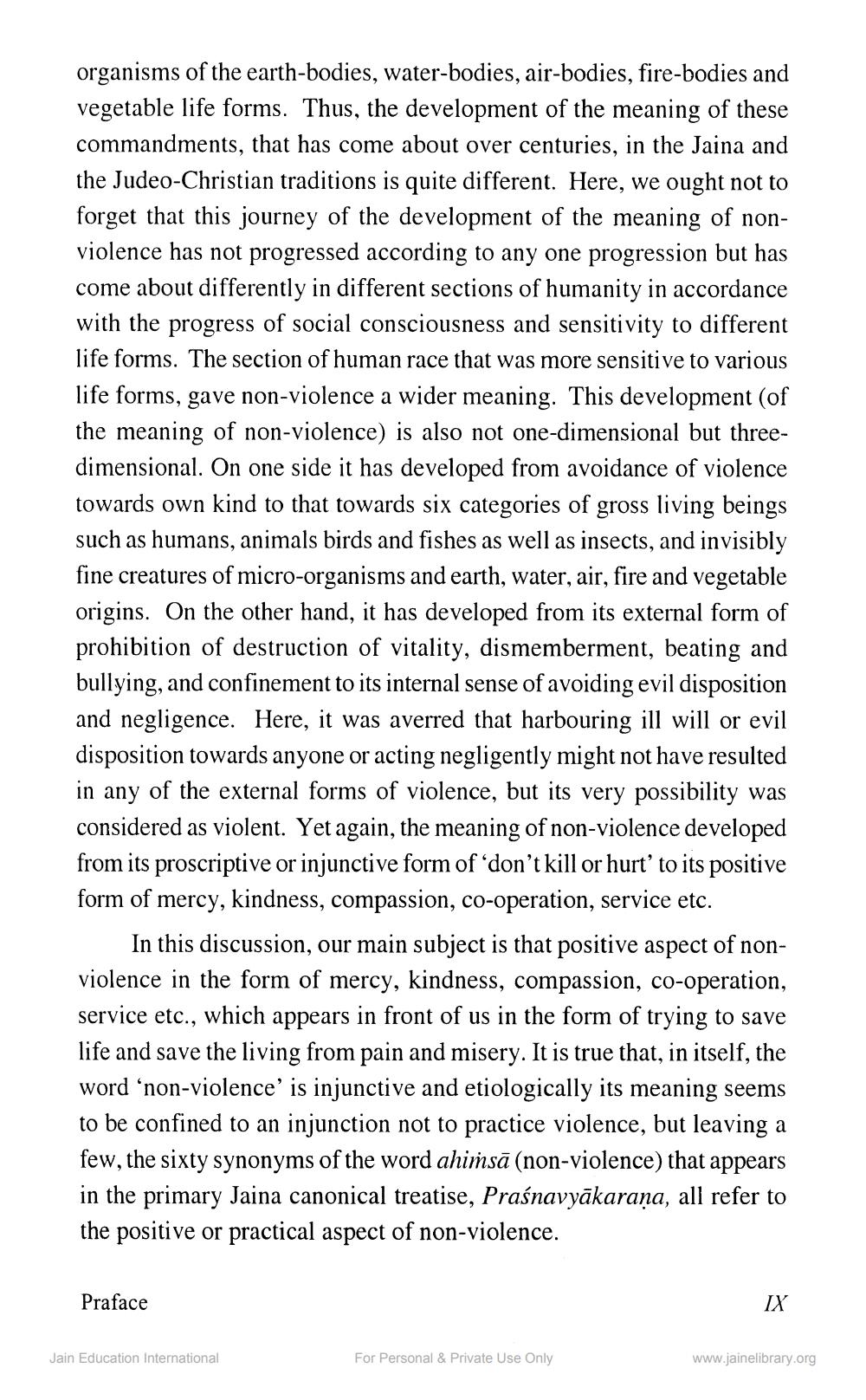________________
organisms of the earth-bodies, water-bodies, air-bodies, fire-bodies and vegetable life forms. Thus, the development of the meaning of these commandments, that has come about over centuries, in the Jaina and the Judeo-Christian traditions is quite different. Here, we ought not to forget that this journey of the development of the meaning of nonviolence has not progressed according to any one progression but has come about differently in different sections of humanity in accordance with the progress of social consciousness and sensitivity to different life forms. The section of human race that was more sensitive to various life forms, gave non-violence a wider meaning. This development (of the meaning of non-violence) is also not one-dimensional but threedimensional. On one side it has developed from avoidance of violence towards own kind to that towards six categories of gross living beings such as humans, animals birds and fishes as well as insects, and invisibly fine creatures of micro-organisms and earth, water, air, fire and vegetable origins. On the other hand, it has developed from its external form of prohibition of destruction of vitality, dismemberment, beating and bullying, and confinement to its internal sense of avoiding evil disposition and negligence. Here, it was averred that harbouring ill will or evil disposition towards anyone or acting negligently might not have resulted in any of the external forms of violence, but its very possibility was considered as violent. Yet again, the meaning of non-violence developed from its proscriptive or injunctive form of 'don't kill or hurt' to its positive form of mercy, kindness, compassion, co-operation, service etc.
In this discussion, our main subject is that positive aspect of nonviolence in the form of mercy, kindness, compassion, co-operation, service etc., which appears in front of us in the form of trying to save life and save the living from pain and misery. It is true that, in itself, the word ‘non-violence' is injunctive and etiologically its meaning seems to be confined to an injunction not to practice violence, but leaving a few, the sixty synonyms of the word ahimsā (non-violence) that appears in the primary Jaina canonical treatise, Praśnavyākaraṇa, all refer to the positive or practical aspect of non-violence.
Praface
IX
Jain Education International
For Personal & Private Use Only
www.jainelibrary.org




